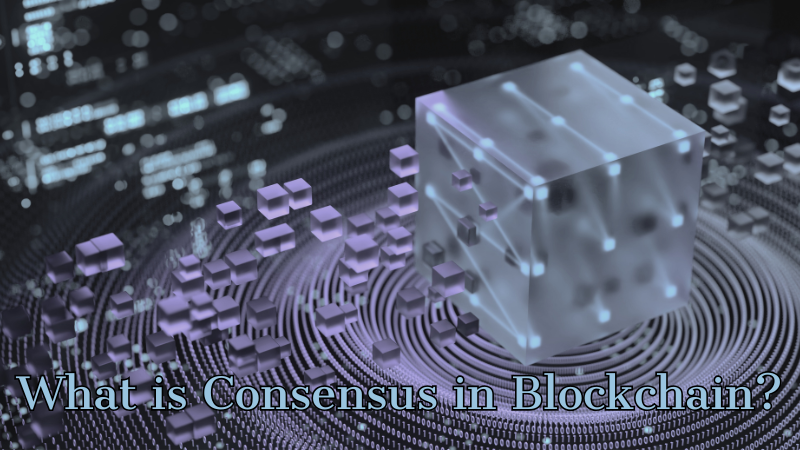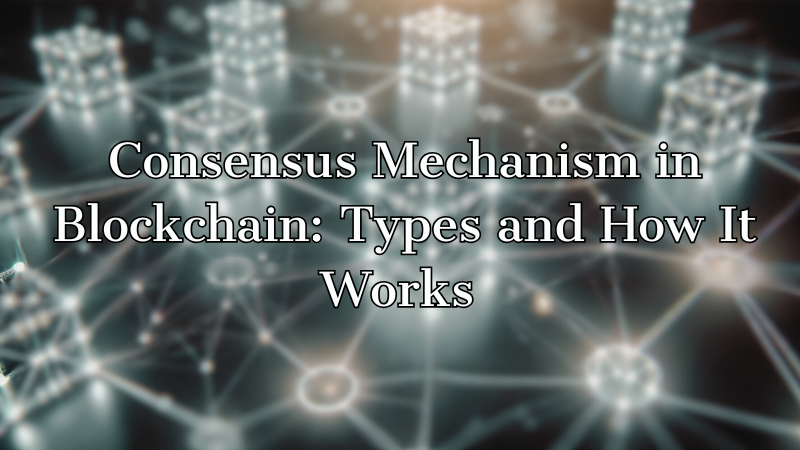Consensus Mechanism in Blockchain: Types and How It Works
A consensus mechanism in blockchain ensures that network nodes agree on the ledger’s state, keeping the chain updated, secure, and decentralized.
In this article, we explore the consensus mechanism in blockchain, its different types, and how it works.
What is Consensus in Blockchain?
Consensus in blockchain ensures that all computers (called nodes) in the network agree on which transactions are valid. Without a central authority, blockchain relies on consensus to keep the system secure and decentralized.
It works by using rules that all nodes follow to verify transactions. Think of it like a group of people making a decision. If everyone follows the same process, they reach the same conclusion. If they don’t, chaos happens.

In blockchain, these rules make sure all nodes agree on what’s true. This prevents fraud and confusion, as only valid transactions are recorded. Without consensus, different computers could add invalid transactions to the chain, which would lead to errors.
Consensus ensures everyone on the network is on the same page, making blockchain trustworthy and efficient. It’s what makes blockchain decentralized and secure. By following these rules, the network operates smoothly, without relying on a central authority.
How Consensus Mechanism Works?
In blockchain, the consensus mechanism helps computers agree on which transactions are valid. When a transaction occurs, the nodes in the network follow a set of rules to verify it.
These rules check whether the transaction meets the requirements, such as ensuring the sender has enough funds or that the transaction matches the blockchain’s standards.
Once all nodes agree that the transaction is valid, they add it to the blockchain. This process prevents errors and ensures that only valid data is recorded. Since there’s no single authority in control, all nodes must work together and confirm the transaction.
Consensus keeps everything accurate and secure. Blockchain uses different methods to reach this agreement. Bitcoin uses Proof of Work (PoW), and Ethereum uses Proof of Stake (PoS). Both methods help the network confirm transactions without fraud.
How Consensus Mechanisms Keep Blockchain Running?
The consensus mechanism is important for keeping the blockchain running. Each time a transaction happens, it must go through this process before being added to the blockchain. Without consensus, there would be no way to confirm that transactions are legitimate, which would lead to errors and fraud.
The consensus mechanism also prevents attacks, like the 51% attack, where bad actors try to control the network. To succeed in these attacks, they would need to control more than half of the nodes. However, because of consensus, altering the blockchain is very difficult and requires significant resources. This makes the blockchain secure.
Consensus also helps the system work efficiently. Transactions are processed faster, and all nodes maintain the same record. Without consensus, the blockchain couldn’t function as a secure, decentralized system. Like any technology, blockchain comes with its pros and cons, including scalability challenges and energy consumption concerns.
Types of Consensus Mechanisms in Blockchain
Below, we explore the different consensus mechanisms in blockchain, examples like Proof of Work (PoW), Proof of Stake (PoS), and Proof of Authority (PoA).
| Consensus Mechanism | How It Works | Example |
| Proof of Work (PoW) | Computers solve complex puzzles to validate transactions. | Bitcoin |
| Proof of Stake (PoS) | Participants lock up cryptocurrency as collateral to validate transactions. | Ethereum 2.0 |
| Proof of Authority (PoA) | Pre-approved validators confirm transactions for faster processing. | Binance Smart Chain |
| Delegated Proof of Stake (DPoS) | Elected delegates validate transactions to improve efficiency. | EOS |
| Proof of History (PoH) | Uses timestamps to organize transaction order quickly. | Solana |
| Proof of Burn (PoB) | Participants “burn” cryptocurrency to show their commitment to the network. | Slimcoin |
| Proof of Capacity (PoC) | Uses computer storage to verify transactions, saving energy. | Burstcoin |
| Proof of Space (PoSpace) | Participants use hard drive space as proof of involvement in the network. | Filecoin |
Pros and Cons of Consensus Mechanisms in Blockchain
Consensus mechanisms have advantages and disadvantages. The right choice depends on the network’s goals.
Advantages
Decentralization. This allows the network to operate without a central authority, with equal rights for all participants.
Security. Consensus mechanisms protect against attacks like Sybil attacks. They ensure all transactions are valid.
Speed and Efficiency. Some consensus mechanisms, like PoS, ensure faster transaction processing and lower energy consumption.
Disadvantages
Energy Consumption. PoW requires significant energy, which can cause ecological concerns.
Centralization. Some mechanisms, like PoS, may cause centralization. Participants with larger stakes gain more influence over the network.
Vulnerability to Attacks. Some systems, especially semi-centralized ones, may be vulnerable to 51% attacks.
History and Future of Consensus Mechanisms
Next, we talk about the history and future of consensus mechanisms, from Bitcoin’s Proof of Work (PoW) in 2009 to newer models like Proof of Stake (PoS) and what innovations may come next.
- Bitcoin and PoW. 2009 Satoshi Nakamoto created Bitcoin and implemented the Proof of Work (PoW) mechanism. This allowed decentralized transaction validation and the creation of the first blockchain-based payment system.
- The Emergence of PoS. Later, Proof of Stake (PoS) was introduced as a more energy-efficient alternative to PoW. Ethereum and other projects adopted PoS to reduce energy use and improve efficiency.
- The Future. New consensus mechanisms in blockchain technology, like Proof of Burn (PoB) and Proof of Authority (PoA), may be developed to improve security and transaction speed.
Consensus Mechanism in Blockchain Summary
Consensus mechanisms in blockchain ensure transactions are secure, decentralized, and trustworthy. Different types, like Proof of Work (PoW), Proof of Stake (PoS), and Proof of Authority (PoA), help networks agree on valid transactions.
PoW is highly secure but energy-intensive, while PoS is more efficient but may lead to centralization. Newer models, such as Proof of Burn (PoB) and AI-driven solutions, aim to improve speed, security, and scalability.
The right blockchain consensus mechanism depends on a network’s top value: efficiency, security, or decentralization.
FAQs About Consensus Mechanism in Blockchain
What is consensus mechanism in blockchain?
A consensus mechanism ensures that all blockchain participants agree on valid transactions without a central authority, keeping the network secure, decentralized, and transparent.
How does blockchain consensus work?
A blockchain consensus mechanism allows nodes to validate transactions before they are added to the blockchain. Methods like Proof of Work (PoW) use mining, while Proof of Stake (PoS) selects validators based on their cryptocurrency holdings.
What are the different consensus mechanisms in blockchain?
Common consensus mechanisms in blockchain include PoW, PoS, PoA (Proof of Authority), PoB (Proof of Burn), and PoSpace (Proof of Space). Each method secures transactions differently.
Why is consensus in blockchain important?
Consensus in blockchain prevents fraud and ensures that all transactions are valid. Without a blockchain consensus mechanism, bad actors could manipulate data, leading to double spending or security risks.
Which consensus mechanism is best for blockchain networks?
The best blockchain consensus mechanism depends on the network’s needs. PoW is highly secure but energy-intensive, while PoS is more efficient but can lead to centralization. Some blockchains use hybrid mechanisms to balance security, speed, and decentralization.






